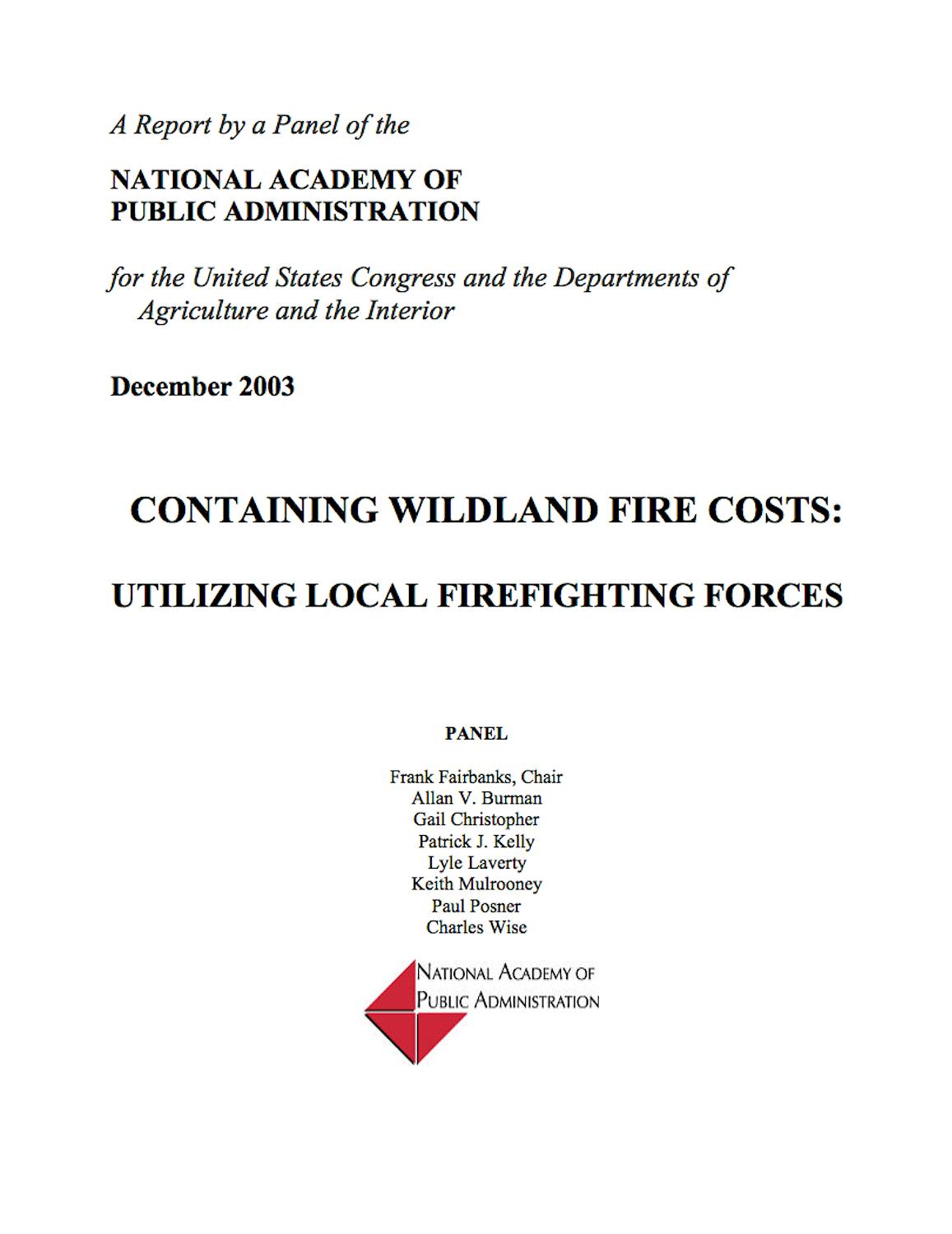
Containing Wildland Fire Costs: Utilizing Local Firefighting Forces
After examining all the factors influencing the costs of wildfire suppression in its September 2002 report, Wildfire Suppression: Strategies for Containing Costs, the Academy’s Wildfire Panel found that one of the few opportunities to reduce suppression costs during a fire was to make better use of local firefighters.
When properly trained, these forces can be used more fully for initial action and extended attack, for mop-up and emergency rehabilitation, and for smoothing transitions between management teams.
Click the button below to view the View Study Report.
View ReportKey Findings
Action to reduce wildfire hazards are addressed in another report by this Panel, to be released in January 2004, but actions to more fully utilize local firefighting resources to control wildfires is equally urgent.
Recommendations
The Panel recommends:
- Establishing an intergovernmental task force representing the National Wildfire Coordinating Group, National Association of State Foresters (NASF), the International Association of Fire Chiefs, International Association of Firefighters, National Volunteer Fire Council, and National Fire Protection Association (NFPA) to make specific proposals on how to more fully qualify and utilize local resources.
- Working through the budget and appropriations processes to ensure that adequate resources are provided for supporting wildfire training for local firefighters.
- Working with appropriate officials at the Department of Homeland Security to ensure that money available for upgrading communications technologies for first responders includes all federal, state and local firefighters responsible for suppressing wildfires.
- Having elected officials and senior administrators in local governments be actively engaged in increasing training opportunities and promoting the development of local Type 3 teams. Without strong local leadership at these high levels, the needed utilization of local forces will be much less likely to occur.